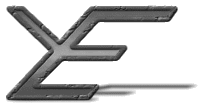The design approach chosen for developing the engine was the Spiral design model [Pressman 1992].
"A model of the software development process in which the constituent activities, typically requirements analysis, preliminary and detailed design, coding, integration, and testing, are performed iteratively until the software is complete." Source: IEEE Std. 610.12-1990.
The YEdit engine was created using the spiral design model, which involves incremental development, iterating through the cycle, starting with the ideas, design, through to the coding and testing. Each time through this cycle increases the functionality, usefulness and completeness of the application. Inevitably the application is refactored (Refactoring is the process of changing a software system in such a way that it does not alter the external behaviour of the code yet improves its internal structure [Fowler 1999]) as it increases in size (this refactoring is an essential part of the process, otherwise the complexity would increase to a point that would not be manageable, and prior to that, it would become very difficult to continue).
This model has advantages over other models when designing applications in new areas. Unlike the Waterfall model, this model allows the high level design to change, as and when is needed, and also allows the design to flow both ways (that is, for discoveries during design, coding, and testing to be applied to the next round of the design), as new approaches are found to problems. As new ways of doing things are found, they are fed back into the loop as it goes around again. This allows new ideas to permeate back up through the design to the top level, and every so often these adjustments will lead to a large refactoring of the whole application. This refactoring decreases the complexity, and because the design has been flowing both up and down the application, a full refactoring is possible (and desirable) to do. In the Waterfall model, this would be much more difficult (generally the Waterfall model is best for applications for which you already have many of the building blocks). The Spiral model is useful if you need to create the building blocks, as you are creating the application.
The spiral approach is better for new designs where the emphasis is on the creative dimension of the development. The iterative approach with the Spiral model is all the more important when embarking on a novel type of project with a reasonable understanding of its overall design, but no clear idea of the details of its components. The iterative approach allows new ideas to be tried, and changes can be made in approach as new information comes to light. This is also important for the free flowing web of information because over the time that this has been created, new ideas about the system have surfaced (such as integration into word processors) and other methods of access have arisen (such as access via handheld computers, with much smaller screens, and access via WAP). The reason that an iterative approach is important is that the Internet is a fast moving area, and this design will need to be able to adapt readily to any new surroundings. The spiral model approach allows you to concentrate on the big issues first, solve them, and go through the process (which includes the full range of software engineering, from ideas, design, right through to testing and feedback). At this point the whole process is repeated. Each iteration gives a finer resolution than the previous, and solutions can be found to unexpected problems. In fact, the three level design of the engine (user interface, middle interface, server interface) came from a refactoring of the code. This particular refactoring opened the way to splitting the user and server sides of the engine completely apart, as originally the user and server interfaces had a much higher integration.
Another reason that the spiral model was a good choice for this design was because the process that was undertaken started with just a broad idea. That was, to look at the Web and see how communication over the Web could be enhanced. In the process, several different areas were considered as possibly contributing to better communication over the Web, such as Web themes and multi-tier web sites. Possible ideas that could help communication over the Web were looked at in the early stages of this project, and one was incorporated into the final version of this website on web content management and collaboration. These ideas were important to look at, as at that early stage, it was not entirely clear what area of improved communication over the Web would be the one that would be best suited to this thesis. The two main areas that were considered before settling on co-operative authoring, content management and collaboration were web themes (similar to CSSs, but on the server side and more of a content/context split, rather than just enhanced display), and multi-tier/multi-homed web sites (to allow much more redundancy in case of problems), the main points of which were incorporated into this research.
| Previous: | 3.16 A solution? |
| Next: | 4.01 Web themes |
